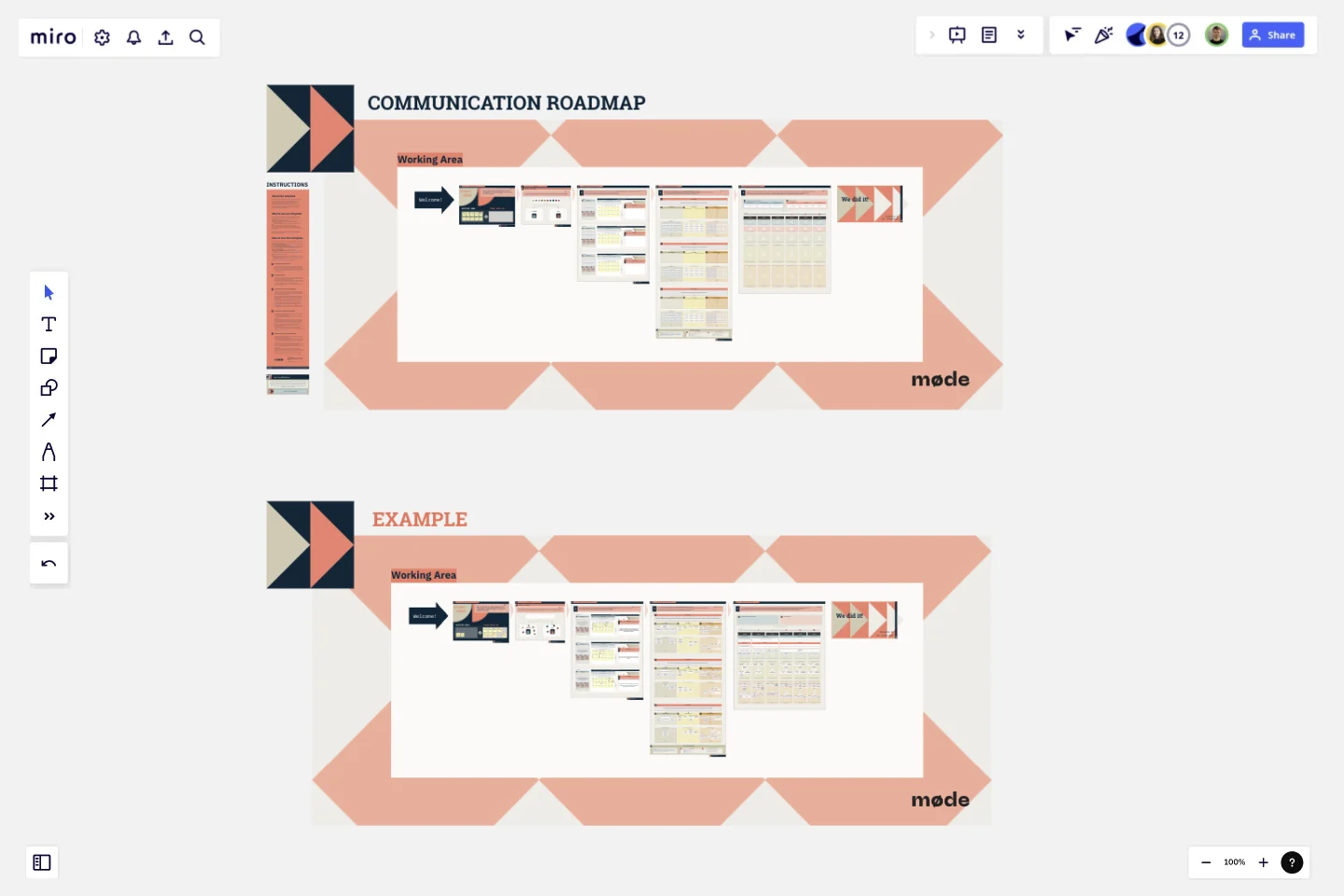Communication Roadmap
This template is a part of our full two-day workshop dedicated to developing a brand communication strategy. It can help your team move from the existing brandbook / brand information to relevant communication messages that align with the current development and communication objectives.
About the template
In our daily practice of working with clients, we at Møde often come across a situation where the brand concept has already been developed and approved by decision makers, but their teams have difficulty translating it into reality at the level of communication messages — general messages that in an understandable form characterize the idea of the brand and its role for the end consumer.
Why to use our template
Our template allows you to stay focused on the current communication goals of the brand team as well as on the main assets of the brand itself (its key idea, functional benefits, attributes etc). In these related exercises, you will first formulate your brand's most important messages, and then:
identify the key audiences to whom the messages may be relevant
select brand attributes that can be demonstrated in communications to support and detail your messages
create a unique ecosystem of channels and touchpoints for broadcasting them.
At the end of this mini-workshop, you will be able to develop a detailed communication roadmap, which will illustrate and interrelate all the entities listed above. You can subsequently pass this roadmap on to the creative team to develop specific creatives that convey the messages highlighted on the plan to the appropriate audience groups.
Due to the well-built UX-design of each frame, you will not experience any difficulties with transferring board elements from one exercise to another, with their editing, prioritization and final visualization.
This template was created by Mode team.
Get started with this template right now.
Strategic Action Framework
Works best for:
Roadmap, Planning, Mapping
The Strategic Action Framework template provides a structured approach for developing and implementing strategic initiatives. By defining goals, strategies, and action plans, teams can align their efforts with organizational objectives and drive progress towards desired outcomes. This template fosters collaboration and accountability, ensuring that strategic initiatives are executed effectively and deliver measurable results.
UML Class E-Commerce System Template
Works best for:
UML
The UML Class E-Commerce System Template streamlines the process of creating and visualizing the class structure of an e-commerce system. It provides a comprehensive framework that includes typical online shop features such as product listings, inventory management, shopping carts, orders, payments, and shipping details. This template facilitates a clear understanding of how these elements interact during an online sales transaction, making it an invaluable tool for teams working on e-commerce projects. By using this template, teams can save time, enhance collaboration, and ensure that their system architecture is robust and efficient, ready to adapt to their business's evolving needs.
Inspired: Creating Products Customers Love
Works best for:
Product Management, Planning
Inspired: Creating Products Customers Love template guides product managers in developing innovative and customer-centric products. By emphasizing empathy, ideation, and validation, this template fosters a deep understanding of customer needs and preferences. With sections for brainstorming ideas, defining features, and validating concepts, it facilitates the creation of compelling products that resonate with target audiences. This template serves as a roadmap for delivering exceptional customer experiences and driving product success.
Value Stream Mapping Template
Works best for:
Project Management, Strategic Planning, Mapping
A value stream map can help you refocus your business on steps that actually provide value to your customers, cutting out wasteful and inefficient processes. With this template, you and your process team can collaborate on a value stream map today.
Prune the Product Tree Template
Works best for:
Design, Desk Research, Product Management
Prune the Product Tree (also known as the product tree game or the product tree prioritization framework) is a visual tool that helps product managers organize and prioritize product feature requests. The tree represents a product roadmap and helps your team think about how to grow and shape your product or service by gamifying feedback-gathering from customers and stakeholders. A typical product tree has four symbolic features: the trunk, which represents the existing product features your team is building; the branches, each of which represents a product or system function; roots, which are technical requirements or infrastructure; and leaves, which are new ideas for product features.
Competitor Product Research
Works best for:
Product Management, Planning
The Competitor Product Research template assists product teams in analyzing competitor offerings and market landscapes effectively. By identifying competitor strengths, weaknesses, and market trends, this template enables teams to uncover insights and opportunities for differentiation. With sections for conducting feature comparisons, SWOT analysis, and market positioning assessments, it facilitates informed decision-making and strategic planning. This template serves as a valuable resource for gaining competitive intelligence and driving product innovation and differentiation.
